When I first wandered into the ruins of Dion, right at the foot of Mount Olympus, I honestly didn’t expect ancient art to move me so deeply. The mosaics of Dion aren’t just decorations—they’re colorful stories in stone, capturing the everyday lives, beliefs, and talents of people who once called this place home. I kept stopping, just staring at those tiny, carefully placed tiles, amazed at how they’ve outlasted the very buildings around them.
What really surprised me was how vibrant and intact so many of these mosaics still are, even after centuries of weather and shifting empires. As I walked the old paths, I caught myself imagining the original residents pausing to admire these same works. If you’re heading to Greece and want to see ancient artistry up close, Dion gives you a rare chance to see mosaics that honestly rival anything else in the Mediterranean.
Exploring these masterpieces with Mount Olympus looming nearby made the whole visit feel a bit magical. That mix of art, landscape, and deep history—Dion just has it.
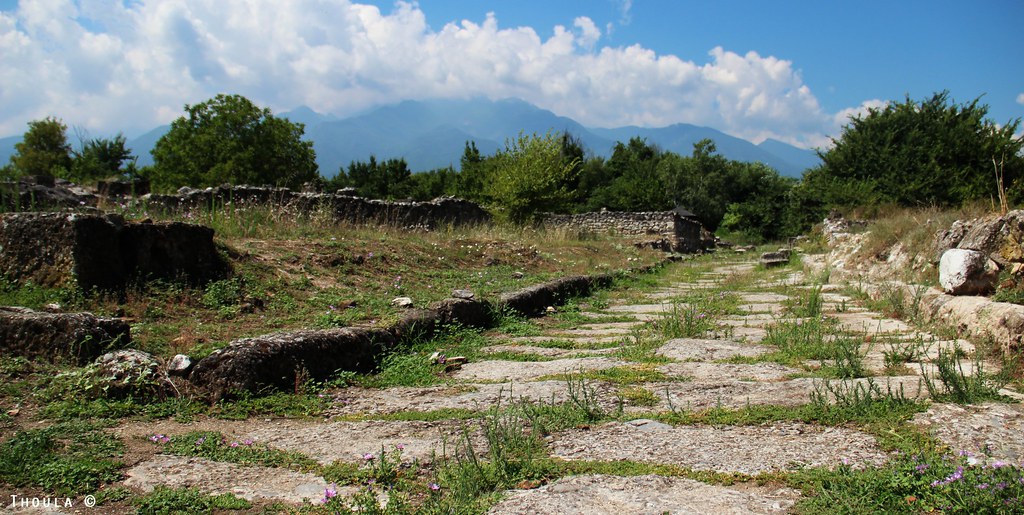
A Magical Encounter: Setting Foot in Dion
Crossing into Dion felt like stepping out of time, straight into a place where Roman history and Greek influence still linger. Each path seemed to offer up some new insight into daily life under the watchful eye of Mount Olympus.
Discovering Dion’s Archaeological Park
I got to Dion’s Archaeological Park early, eager to see what was left of a town once protected by the gods. Right away, I spotted well-marked trails winding through ruins and temples, but the mosaic floors really stole the show.
The park sits at the foot of Mount Olympus, and honestly, the setting is breathtaking. Tall trees and open fields surround the ruins, making it feel peaceful. Signs—some in English—pointed me toward the highlights. The Villa of Dionysos especially caught my eye for its detailed mosaics, which many say are the best in Macedonia.
I picked up bits and pieces about how archaeologists started unearthing these wonders just last century. Statues, mosaics, baths—they all tell stories from the Greek and Roman empires that shaped this place.
Quick tips to prepare:
- Wear comfortable shoes
- Bring water, especially in summer
- Allow 2–3 hours for a full visit
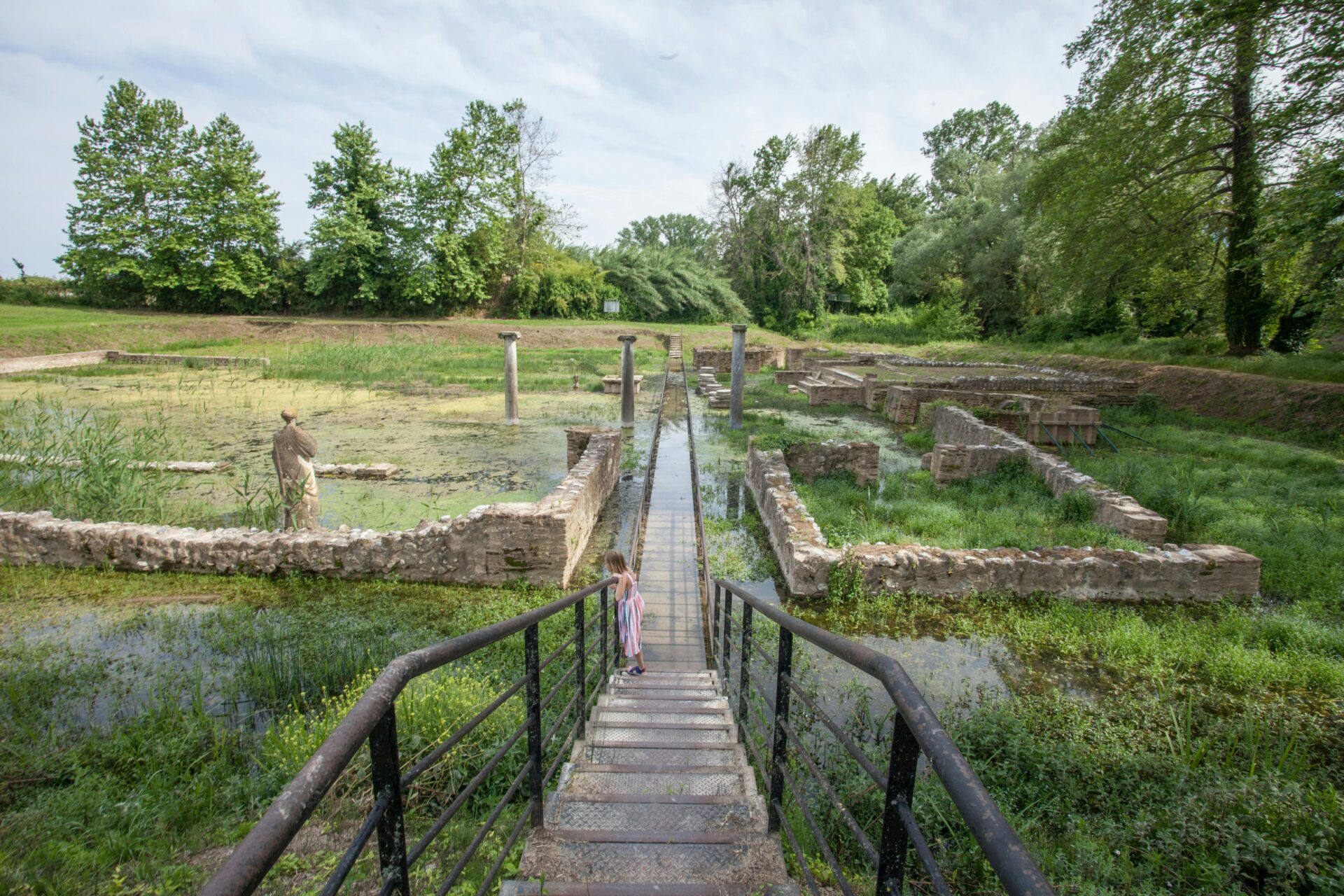
First Impressions in the Shadow of Olympus
As I wandered deeper, Mount Olympus seemed to follow me everywhere, always in the background. That mountain reminded me that gods and emperors once ruled here. The ruins reached across time, with faded columns and colorful mosaic floors hinting at a city that’s long gone but not forgotten.
Every step felt like a small discovery. I passed Roman baths and temples, their outlines still clear. It hit me just how advanced these people were, both in art and engineering.
Scholarly notes scattered around the park highlight big finds and offer quick bits about Dion’s role as a religious center and Roman colony. Even though so much has changed, the spirit of ancient times lingers—especially when sunlight hits the mosaics and their patterns seem to blend with the earth and sky.
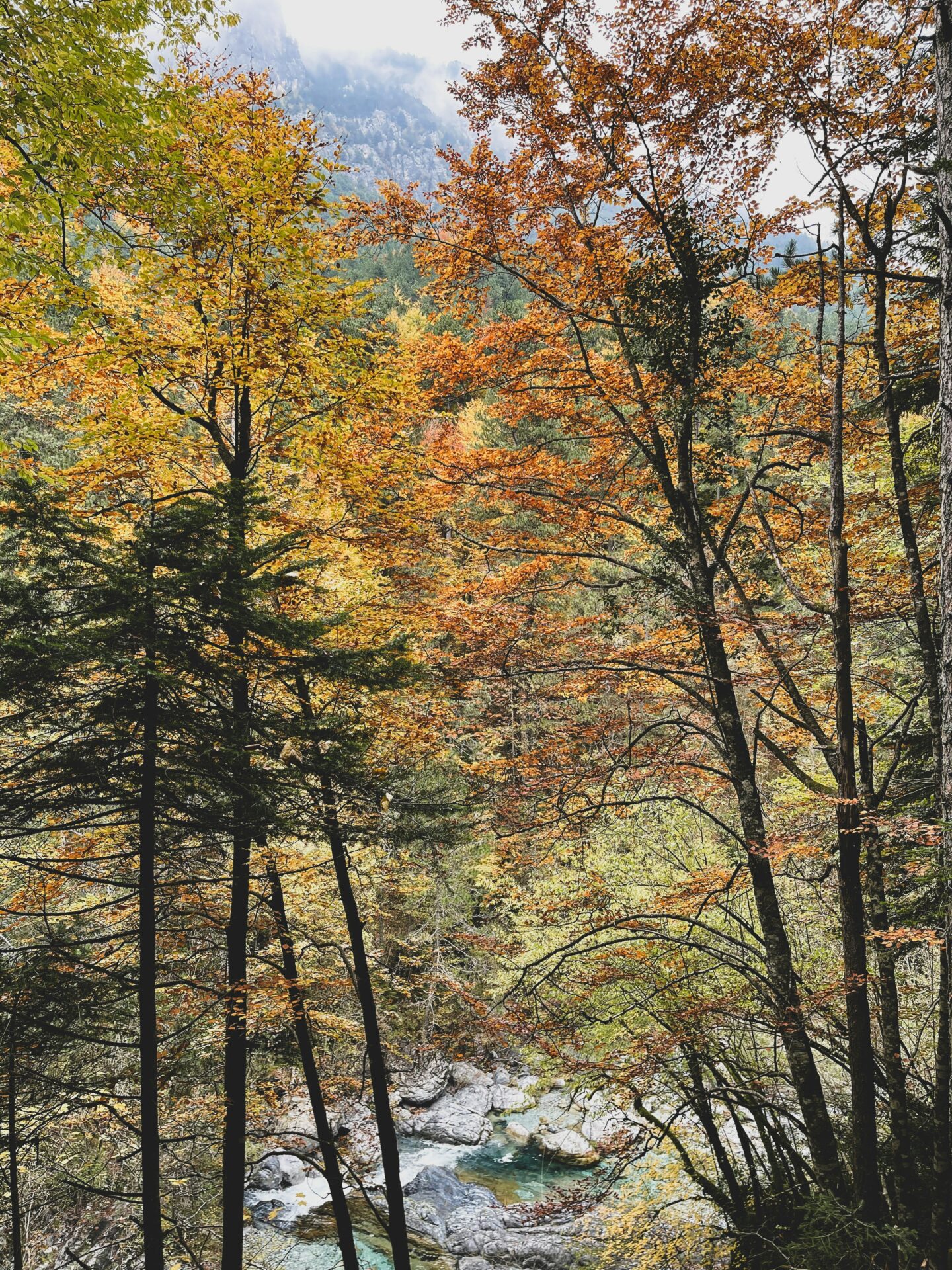
Unveiling Artistic Mastery: The Mosaics of Dion
As I moved through Dion, I found myself surrounded by mosaics bursting with color and meaning. Each floor and wall seemed to connect me to a lost moment in Greek history, where myth and stone came together to create something lasting.
Iconography and Symbolism Embedded in Stone
The Dion mosaics are packed with symbols from Greek myth. Dionysus appears often—crowned with ivy, holding a drinking horn, surrounded by satyrs and nymphs.
With every step, I saw more than just pretty pictures. These figures act like codes from the past, using things like vines, grapes, and crowns to show wealth, festivity, and the cycle of life. I got the sense that the artists wove myth into everyday life, honoring their gods with every stone.
Here are a few symbols you’ll spot in Dion’s mosaics:
- Ivy and grapevines: Dionysus and abundance
- Thyrsus staff: Dionysus’ divine power
- Drinking horn: Celebration and ritual
- Leopards and other animals: Dionysus’ wilder side
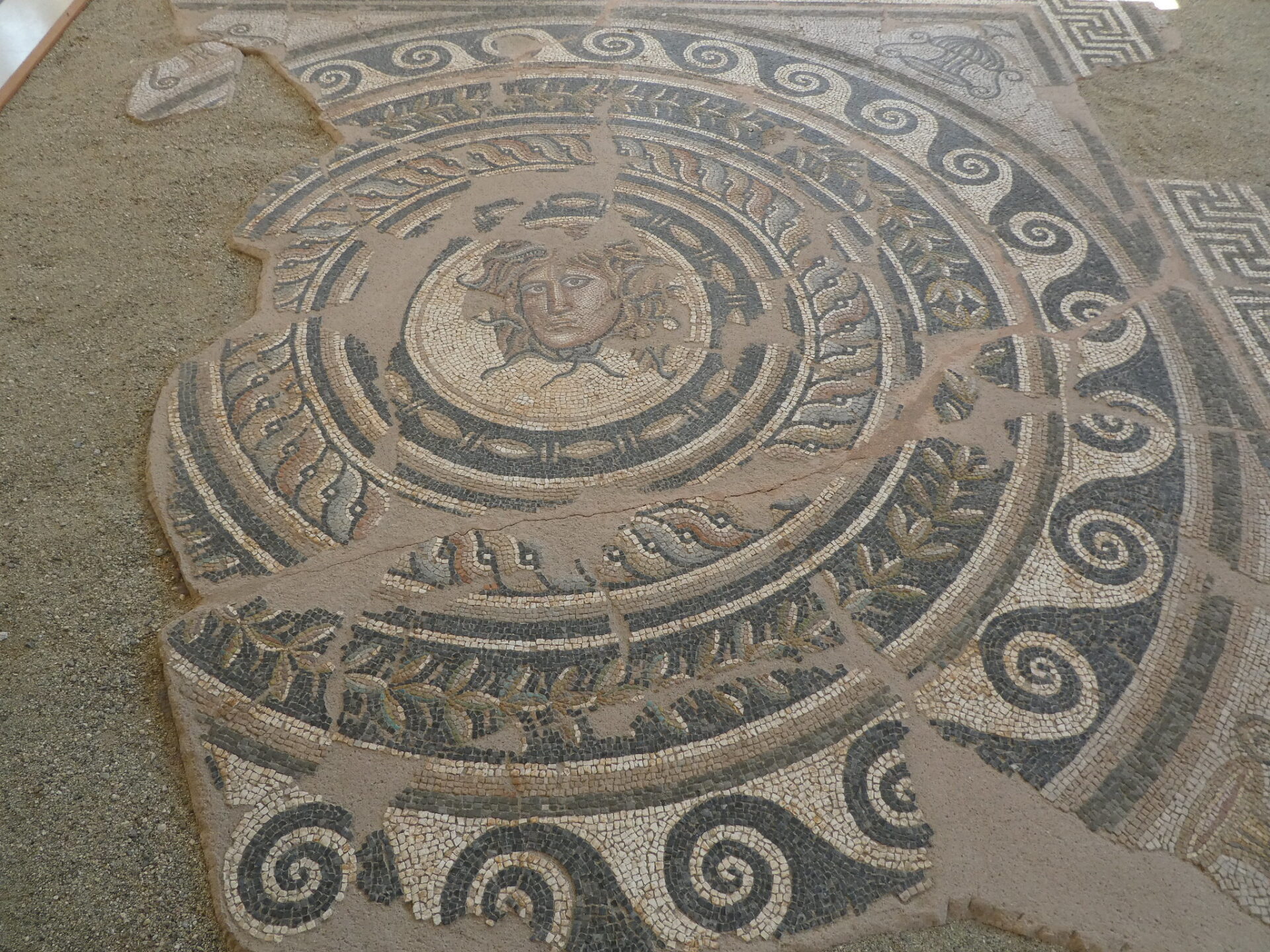
Techniques and Materials: Shells to Agates
What really blew me away was the variety of materials the artists used. Most scenes are made from thousands of stone pieces, but if you look close, you’ll see onyx, blue-green agates, even shell pieces worked in.
These mosaics aren’t just beautiful—they’re built to last. The artists cut stones to fit perfectly and picked colors with care. Using minerals and shells, they created effects that almost shimmer. Every detail—whether it’s a piece of agate or polished onyx—adds depth and makes the scenes come alive.
Local guides explained how the artists studied their materials before starting. They picked stones for both looks and strength, creating art that’s survived earthquakes and wars. Knowing they did all this by hand, without modern tools, just makes it all the more impressive.
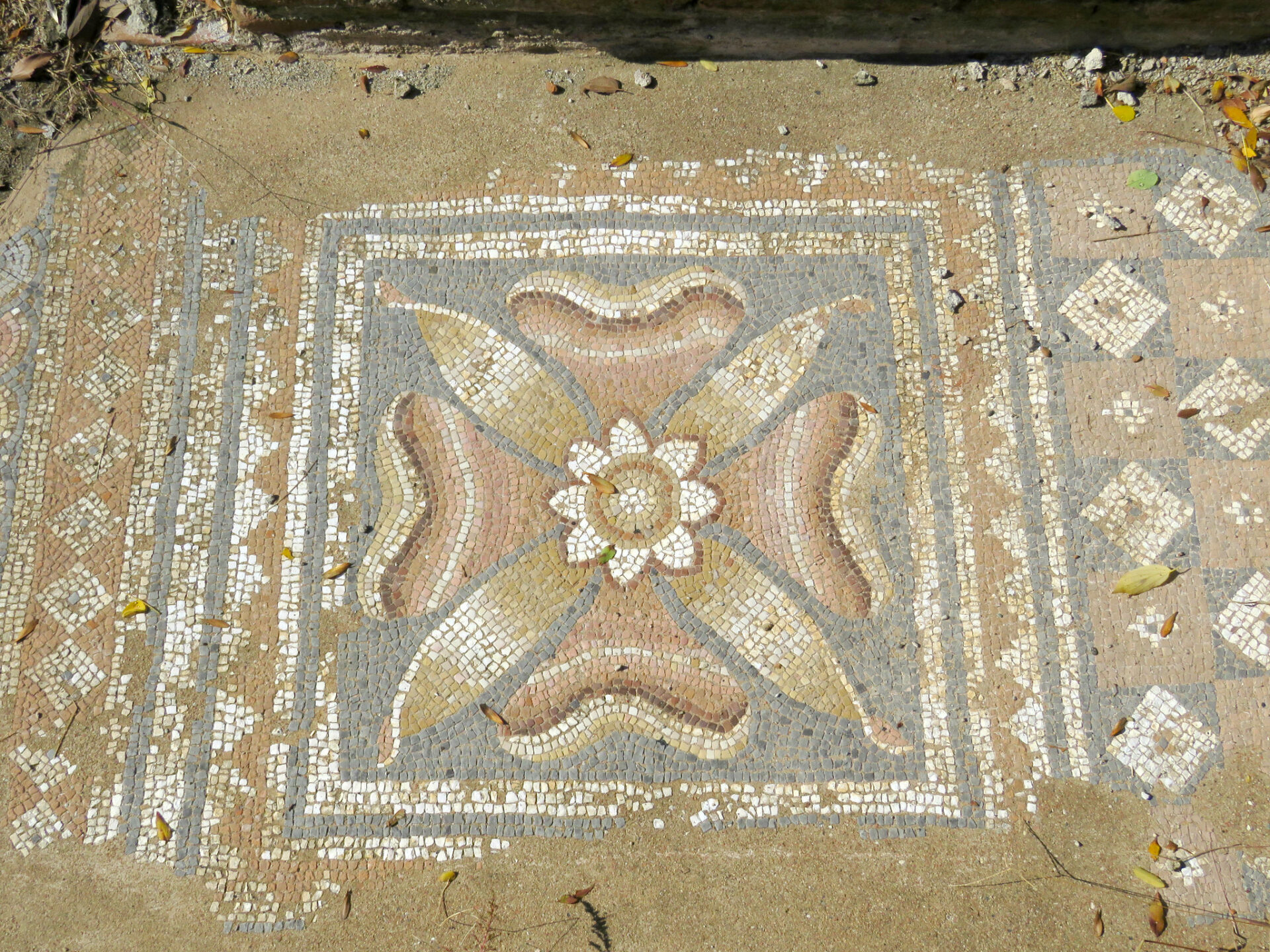
Unraveling Stories and Myth in Mosaic
Standing in front of the grand Dionysus mosaic, I felt like I was watching an ancient story unfold. These mosaics aren’t just art—they’re stories set in stone, guiding you through scenes of revelry, daily life, and ritual.
One mosaic shows Dionysus leading a crowd with music and dance, capturing both movement and emotion with nothing but colored stones. Other panels hint at festivals, sacrifices, and feasts, each figure packed with meaning. By placing myth at the center of their art, Dion’s artists turned their floors into a living storybook.
Travel Tip: Bring a notebook or just use your phone—there are so many details, and each visit reveals something new. If you love Greek myth, every mosaic feels like a puzzle waiting for you to solve.
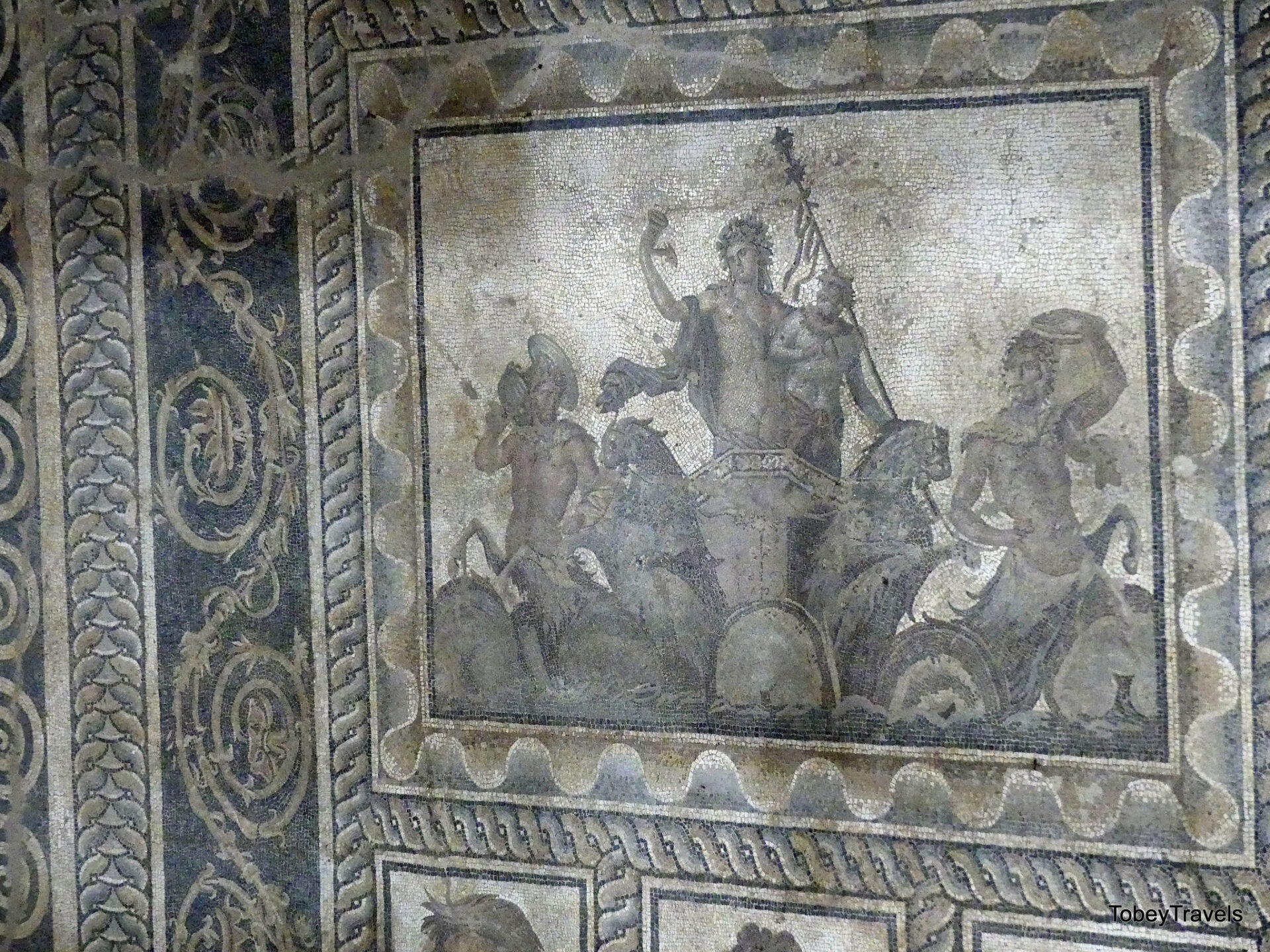
Whispers of the Divine: Gods, Rituals, and Sacred Imagery
As I wandered through Dion’s ancient ruins, the mosaics pulled me into a world where gods mingled with mortals. Images of Apollo, Dionysus, and even early Christian symbols show how art captured spiritual life and everyday rituals.
Mosaic Narratives of Apollo and the Temple
I paused in front of one mosaic, drawn in by Apollo’s calm, almost glowing face. The tiles formed his wavy hair and the lyre by his side—a sign of music and prophecy.
The Temple of Apollo once stood nearby, acting as the spiritual heart of Dion. People brought offerings and prayers here. The mosaics show laurel wreaths, sunbursts, and mythical creatures at Apollo’s feet.
As I admired the scene, I realized Apollo was more than a god—he was a protector. Locals believed his presence brought harmony. Every detail—from gold tesserae to delicate borders—hinted at the honor paid to him.
Standing there, I could almost hear the ancient ceremonies and smell incense drifting through the air.
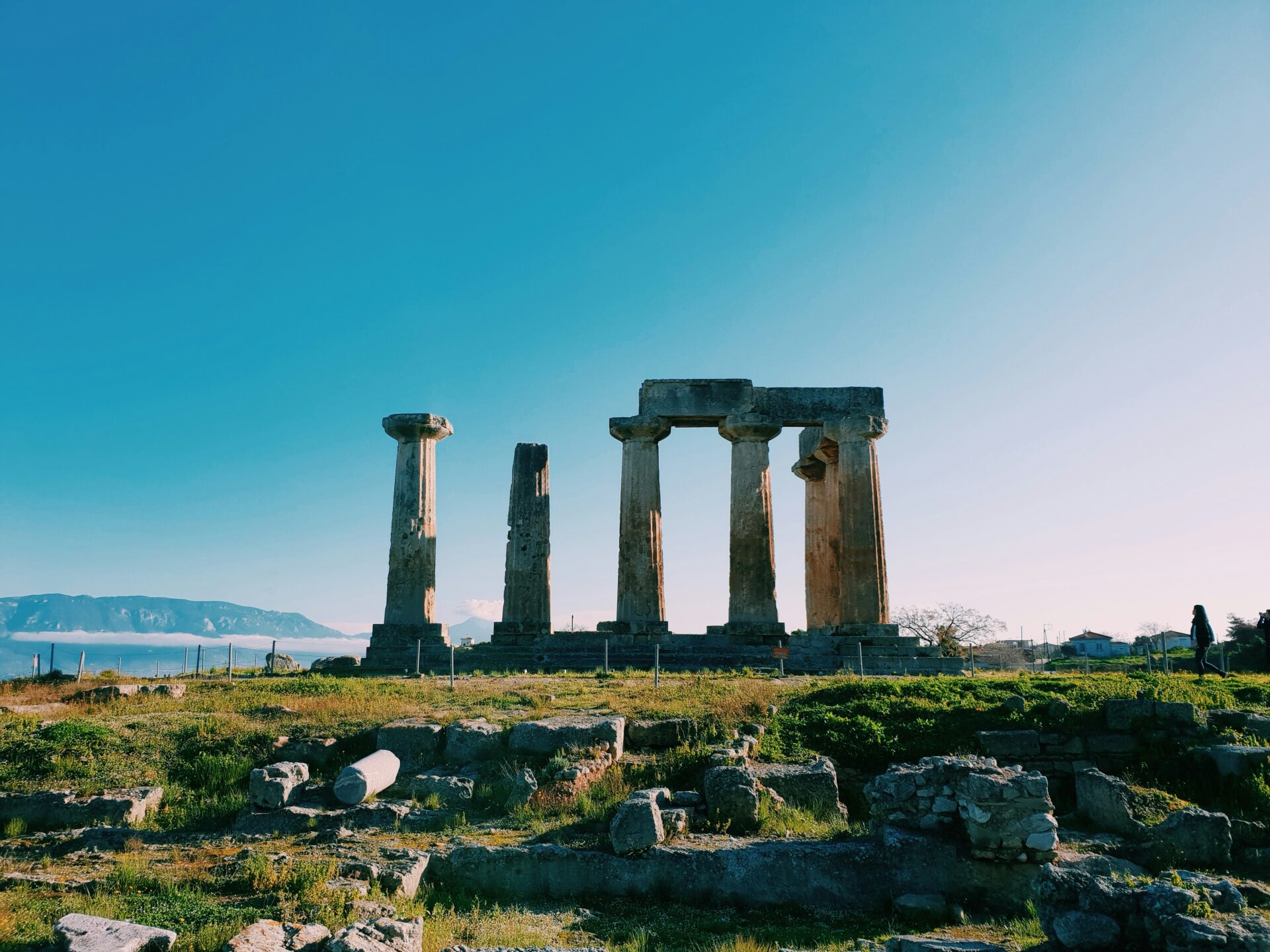
Discovering Dionysus and the Celebration of Fertility
Further along, Dionysus appeared in bright mosaics, lounging by thick grapevines, wine cup in hand. Symbols of fertility—pomegranates, ivy, bursting grapes—spread across the scene.
The Dionysian cult celebrated rebirth and joy, honoring the cycles of nature. Their parties were wild, full of music, dance, and ritual drinking. These gatherings weren’t just for fun—they honored the divine force of growth and renewal.
I noticed small details too: theater masks, panthers, women dancing in flowing robes. Each mosaic offered a vivid slice of ancient life, blending myth and reality.
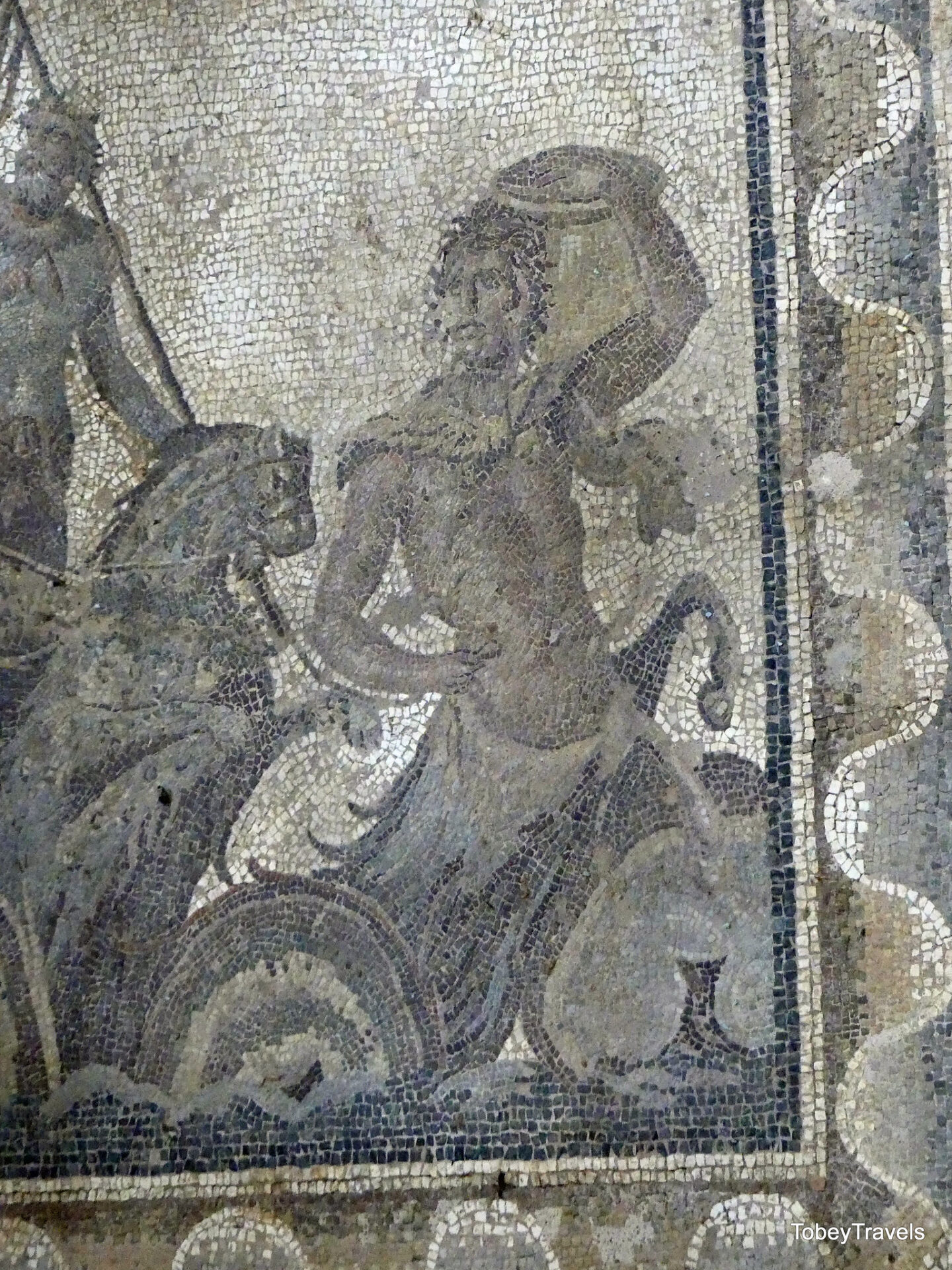
Traces of Paganism and Early Christianity
In quieter corners of the ruins, I spotted mosaics hinting at changing faiths. Pagan gods appear beside Christian symbols—crosses, fish—layered over older images.
Early Christians in Dion often reused temples and homes, adding their marks over pagan designs. This overlap shows how old beliefs faded slowly, mixing with Christianity.
Seeing a faded cult statue near a simple mosaic cross made me think about that transition. The art tells a story of people adapting, blending traditions, and searching for a new spiritual identity. Dion wasn’t just a place—it was a crossroads of faiths and stories.
Echoes of History: Mosaics, Emperors, and Everyday Life
Dion’s mosaics do more than just look pretty; they open a window into the city’s layered past. As I walked through the ruins, I could almost feel the presence of emperors and everyday folks—a rare glimpse into the heart of the Roman Empire.
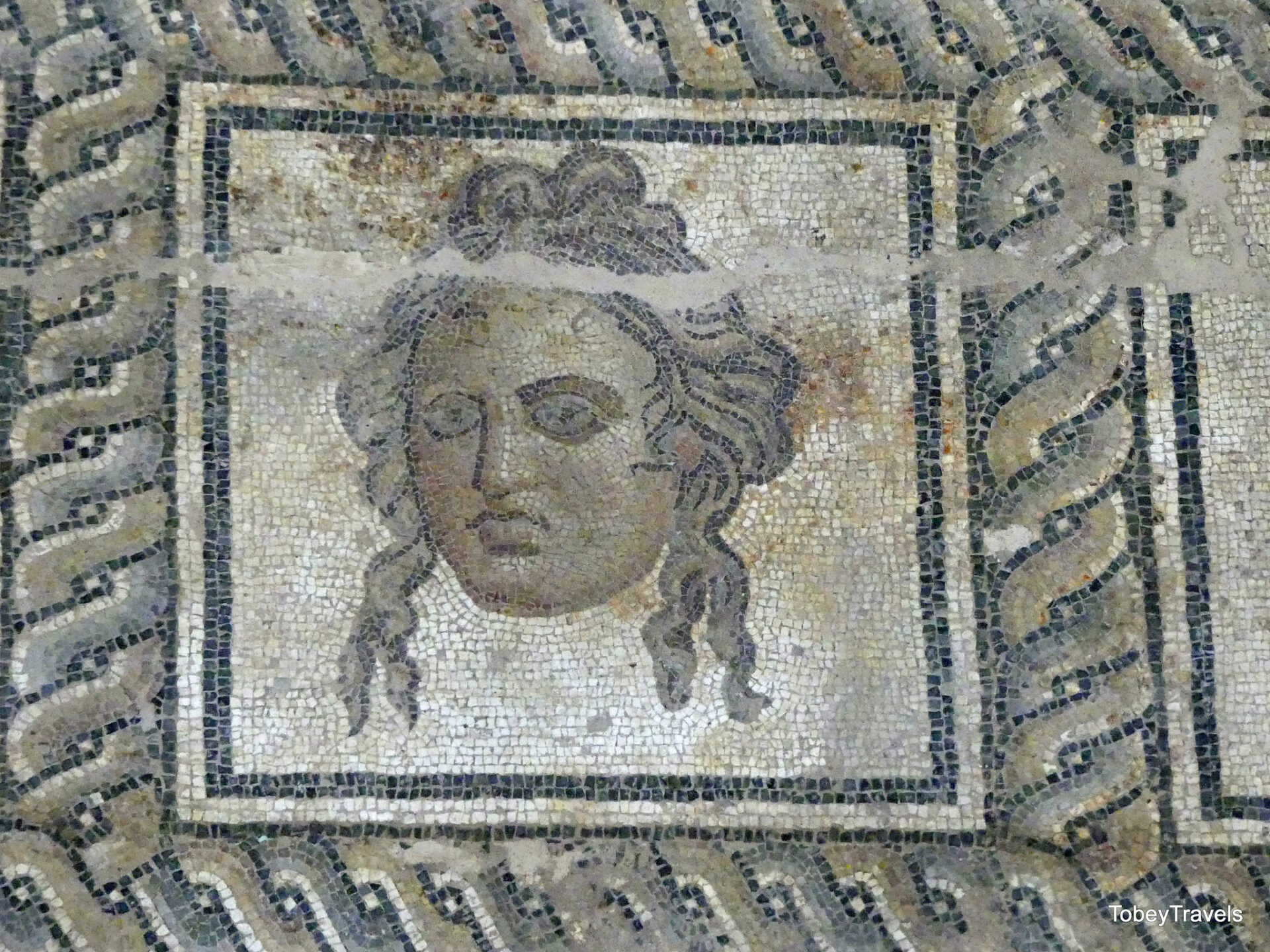
Emperor Augustus and Vespasian’s Era in Dion
In Dion, I quickly noticed artistic touches that revealed its history during the reigns of Augustus and Vespasian. The city flourished under Roman rule, growing as a political and cultural hub right beneath Mount Olympus.
Here’s a quick look at their influence:
| Emperor | Timeframe | Dion’s Role |
|---|---|---|
| Augustus | 27 BCE–14 CE | Expansion, Urban Growth |
| Vespasian | 69–79 CE | Infrastructure, Security |
Augustus brought Roman administration and built temples and theaters. Vespasian’s era added stability, with new roads and civic buildings. Every mosaic hall I entered reminded me of the deep imprint these emperors left on daily life and art.
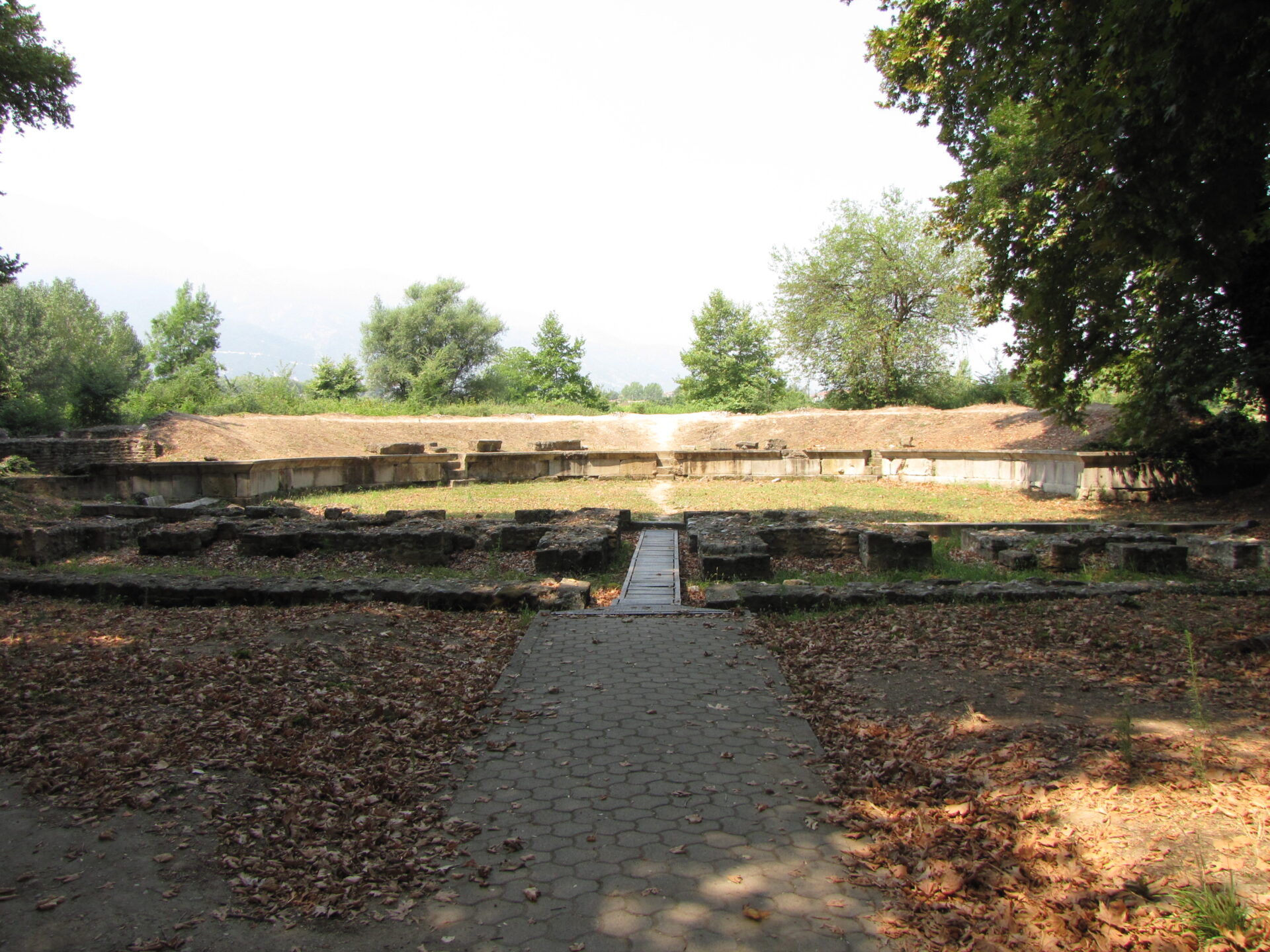
Gladiators, Drama, and Scenes of Daily Living
Some mosaics in Dion show scenes straight from the arenas—gladiators locked in combat, shields clashing in vivid detail. Other mosaics capture Roman playwrights and actors, showing how much drama meant to the city.
More subtle mosaics reveal daily life: merchants, women weaving, children playing. These images give a real sense of what ordinary life looked like beyond the grandeur of emperors. While the Minoan past and hints of Linear B style add depth, the Roman scenes really bring Dion’s stories to life for any traveler who wants to walk where history happened.
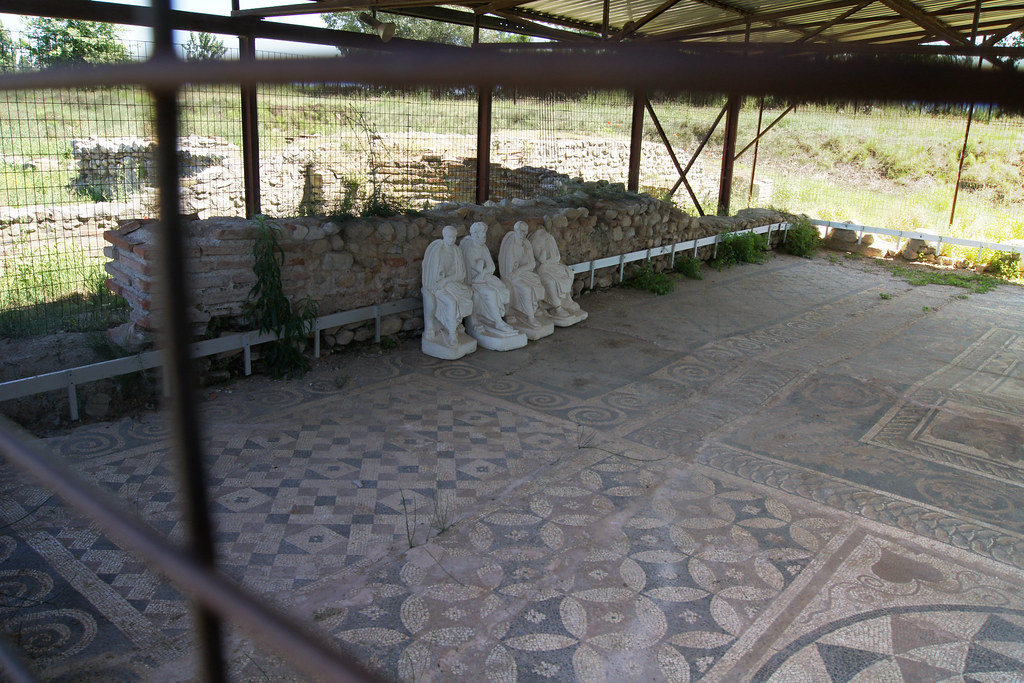
Legacy of Learning: Dion’s Place in Knowledge and Literature
Dion’s mosaics invite more than just admiration—they open a window into ancient education, storytelling, and the way wisdom passed from one era to another. Standing there, I felt the connection between myth, scholarship, and an ongoing conversation about beauty and meaning.
Philosophy, Teaching, and the Art of Learning
When I wandered through Dion, it felt like I’d stumbled into a classroom from some forgotten era. This place wasn’t just about worship or politics. People gathered here to debate, to think, to learn. The ancients really treated spots like Dion as open-air schools, where the big questions of life got tossed around.
Plato and Aristotle actually taught near here, which ties Dion pretty closely to the roots of Western philosophy. Lessons about virtue, nature, and community echoed across these old stones.
I noticed how the mosaics—each pebble set with care—kind of reflected the patience and detail that teaching takes. Learning wasn’t just about books back then. It happened outdoors, in shared spaces, through words and just paying attention.
That feeling still lingers in Dion, especially for travelers who are a bit curious. I paused beneath the shadow of Olympus, listened to the birds, and honestly, it was easy to picture an ancient philosopher pausing too, thinking about knowledge under this same sky.
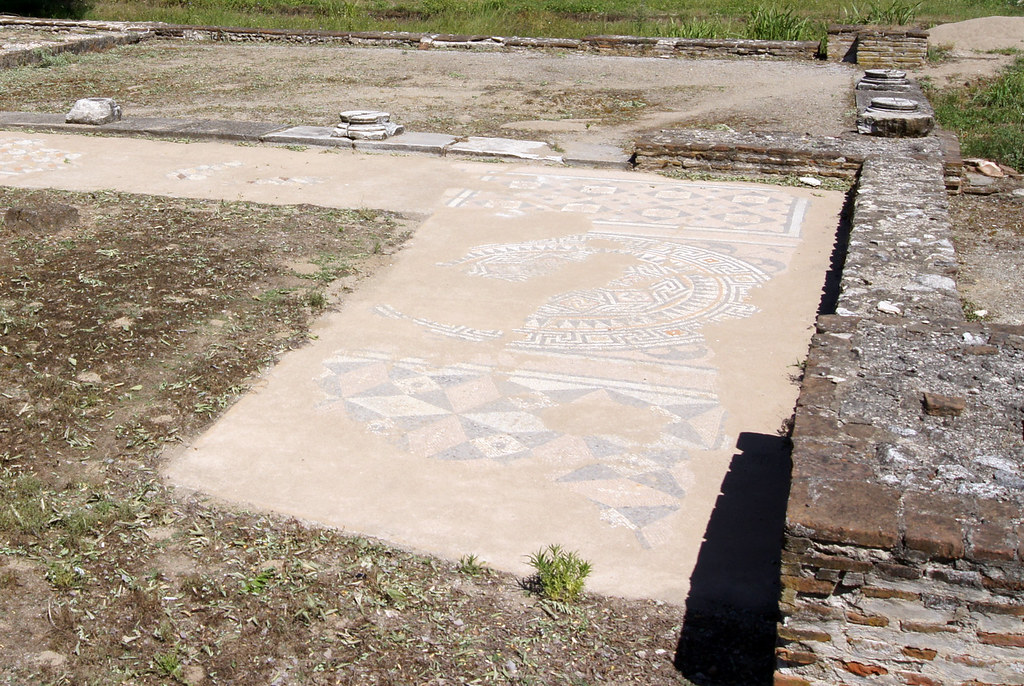
Literary Echoes: From Homeric Epic to Sappho
Dion’s history weaves right into the heart of Greek literature. You see stories from the Homeric epic—all those bold heroes and wild journeys—painted and set in stone here.
The mosaics almost whisper scenes from the Iliad and Odyssey. Sometimes I imagined Sappho herself, maybe composing verses inspired by these hills, her poetry adding a softer, more personal touch to all the grand tales.
Standing by a faded mosaic, I thought of Eustathius, the archbishop and scholar from Thessaloniki who wrote commentaries on Homer. His work links Dion’s echoes to the legendary libraries of Alexandria.
These mosaics aren’t just art; they’re chapters in a long, winding story of feeling and scholarship. Even now, it feels like the art and stories here still breathe, gently nudging visitors to listen, maybe even to learn something new.
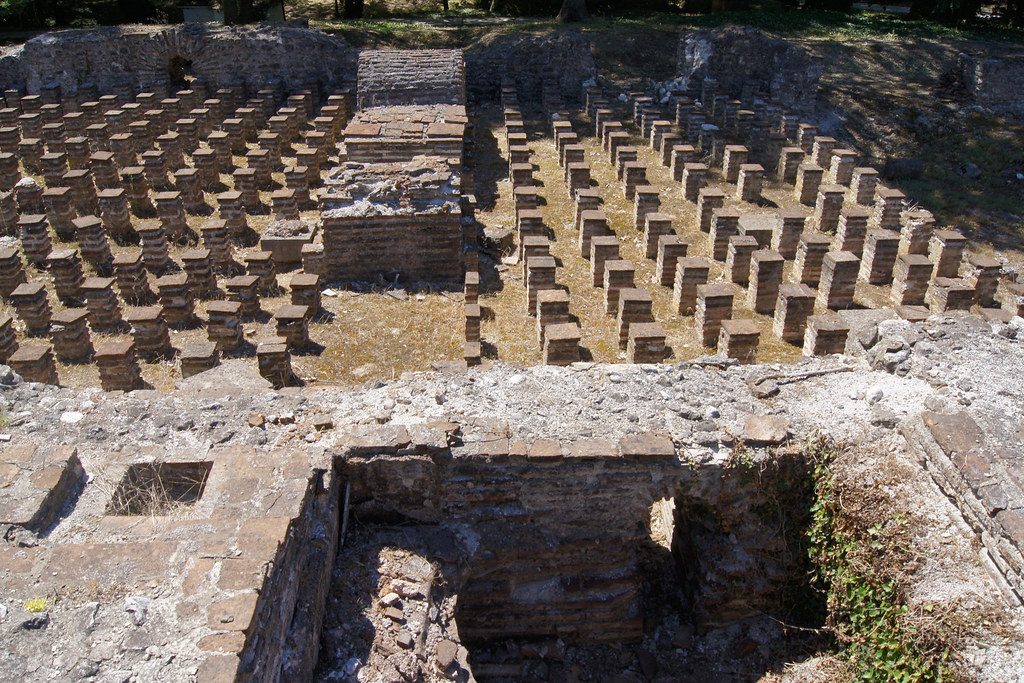
Renewal and the Modern Interpretation of Dion’s Mosaics
You know what really got me? Dion actually sparks something new in every generation of thinkers and artists. The place feels like a living studio—archaeologists, students, and travelers all jump in, swapping ideas and discoveries.
Whenever someone uncovers a mosaic, it’s like the past hands us a new perspective. Suddenly, old skills and ancient ideas seem fresh again.
Workshops pop up, and guided tours buzz with energy. When I visited, I ran into a group just sitting there, sketching patterns from the mosaics. They took those old designs and spun them into something totally their own.
People keep up the scholarship, too. It’s like they’re carrying the torch from old Alexandria right into our digital age.
Honestly, these stones aren’t just museum pieces. They nudge you to think, create, and keep learning. If you’re curious, there’s always something practical to take away.

